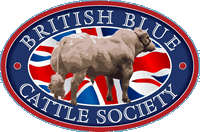IBR
IBR AND AI BULLS - IMPORTANT NOTICE
EU Regulations for bull semen collection – IBR
No bull that tests positive for IBR can enter a stud with an EU Licence, THIS INCLUDES VACCINATES
Semen for export to Northern Ireland, the EU and third countries CAN ONLY be collected on a fully EU Licenced stud
When adopting a Health Scheme programme, it is essential that you consider possible future plans for semen collection from the best bull calves
Potential stud bulls can be “ring-fenced” by restricting use of IBR vaccine to the remainder of the herd.
Taking these high fliers to livestock shows and sales, as will be advised by your vets, is a well-known risk factor.
Semen from IBR vaccinates and IBR positive bulls can be taken on farm but for sale / use within England, Scotland and Wales only.
Please consider these options carefully to avoid disappointment and, of course, the loss of potential valuable off-farm revenue.
For further information please contact either Jim Cameron (07977 281070), Geoff Corke (01953 789011) or Rob Wills (07980 894660)
Why you need to start protecting your herd now!
IBR – affects productivity and profitability in many ways
What is IBR?
Infectious Bovine Rhinotracheitis (IBR) is a common cause of respiratory disease in both young stock and adult cattle in the UK. IBR is caused by a virus – Bovine Herpes Virus 1 (BHV1).
IBR is highly contagious and can quickly spread through a group of calves – it can spread by direct contact, infected semen, by airborne spread and other indirect methods. BHV1 principally affects the upper respiratory tract and can lead to fatal pneumonia.
The secretions of affected calves are extremely infectious and appear to be highly attractive to other animals. All ages of animals are potentially at risk. Once an animal has become infected, it remains infected for life, despite the development of an effective immune response. These animals can shed virus at any time when stressed and as a result, movement of animals into a herd is often a source of new infections.
While older animals can suffer from ‘classical IBR’, that often develops after re-stocking, it is often more signifi cant in young stock as part of the calf pneumonia complex. IBR reduces immunity so secondary bacterial infections and death can occur with some virulent strains.
Herd problems caused by IBR
Respiratory Disease
Milk drop
Reproductive failure
Death
Why should I act now against IBR?
While the BSE outbreak has prevented export of live cattle from the U.K., countries can also restrict the free movement of animals depending on BHV1 status. Therefore when the BSE restrictions are lifted, IBR (BHV1) will become important. This is because many countries in Europe have moved forward with BHV1 disease eradication programmes.
While live cattle exports are currently prohibited it is possible to export semen taken from bulls in the UK. The production of semen is governed by EU rules affecting bulls on approved EU bull studs and mean that these animals must have no antibodies to BHV1, i.e. following infection with BHV1 or following use of any IBR vaccine (conventional or marker vaccine).
If steps are not taken to eradicate IBR from their herds, U.K. pedigree breeders will fi nd opportunities for export will become increasingly limited even when the export ban is lifted. Furthermore, as breed societies increasingly address this issue, IBR-free classes /sales for domestic trade in pedigree cattle are likely to grow – so limiting commercial opportunities for pedigree breeders even if they do not intend to export live animals.
What are the advantages of eradicating IBR?
If you do act now, you can benefit from a variety of health and productivity benefits. You will also be in a favourable position when the export market reopens, as you will be able to achieve early herd certifi cation and improve the value of your stock. It makes sense to act now.
Have you got IBR on your farm?
IBR may be more common than you think. A study was recently carried out by Pfi zer and the Leeds Veterinary Laboratory during the 2000-2003 winter period. Blood samples were taken from calves ( > 4 months old) who had experienced a pneumonia outbreak. The survey showed that IBR was found in 17-32% of the calves.
A widespread survey of UK dairy herds, published in 1998(1) showed that around 69% of the herds surveyed had evidence of BHV1 infection.
There are some simple tests your Veterinary Surgeon can carry out to establish if your cattle are BHV1-positive.
What do I need to do if my cattle have IBR?
After the current levels of IBR in your herd are established and monitored, a risk assessment and biosecurity programme need to be developed. Then an appropriate vaccination programme needs to be introduced. Your Veterinary Surgeon can help you with the development of the right programme for your situation.

